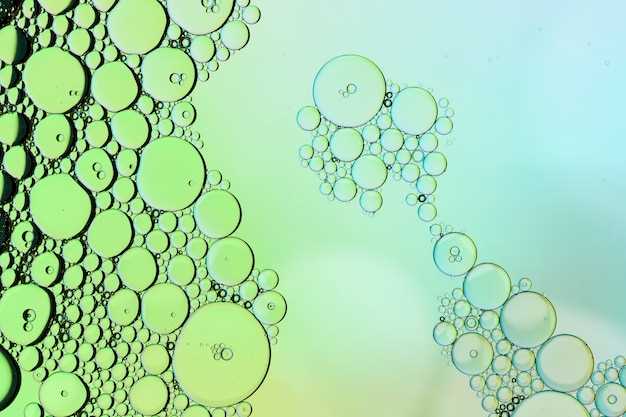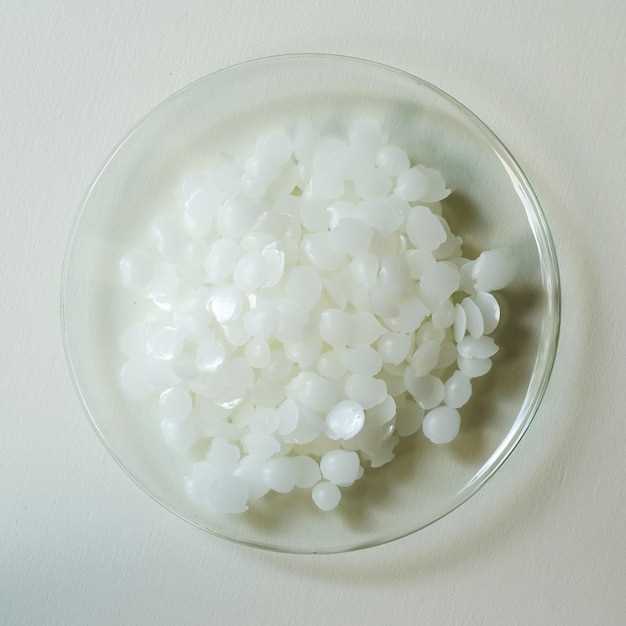
Discover the remarkable potential of a revolutionary pharmaceutical compound – a game-changer in addressing solubility challenges. Unleashing a breakthrough solution that harnesses the power of cutting-edge science, this innovation redefines the future of drug delivery.
Unveiling a Marvel of Technology
Introducing a novel approach to deliver active ingredients with unparalleled efficacy, our advanced formula guarantees maximal absorption rates and immediate action. With a solution meticulously developed by our team of expert scientists, we have enabled superior bioavailability and optimised therapeutic outcomes.
Pioneering a New Era in Drug Delivery
Leave the constraints of traditional drug delivery systems behind and embrace a groundbreaking solution that elevates the performance of pharmaceutical compounds. Our cutting-edge technology offers a quantum leap in solubility enhancement, unlocking a boundless potential for the future of medicine.
The Choice of Leading Innovators
Join the ranks of industry leaders and forward-thinking scientists who have already embraced this exceptional breakthrough. Experience the transformative power of our solution, propelling your success by ensuring the efficient delivery of therapeutic benefits.
Unlock the true potential of your pharmaceutical compound with our unparalleled solubility solution. Enquire now to seize this extraordinary opportunity and revolutionize drug delivery.
Solubility of Buspirone Hydrochloride
The ability of Buspirone Hydrochloride to dissolve in various solvents is a key aspect that determines its effectiveness and application. Understanding the benefits of its solubility is essential for anyone involved in the pharmaceutical industry or those seeking to enhance the drug’s therapeutic potential.
Examining the properties of Buspirone Hydrochloride and its solubility offers a glimpse into the potential benefits it can provide. By enhancing its ability to dissolve, the drug can be more readily absorbed by the body, leading to faster and more effective relief for patients.
This solubility also plays a significant role in the formulation of various pharmaceutical products. By understanding the factors that affect the solubility of Buspirone Hydrochloride, scientists and researchers can optimize its formulation to ensure maximum performance.
Furthermore, the solubility of Buspirone Hydrochloride opens up opportunities for various methods to enhance its effectiveness. Researchers are exploring innovative techniques and technologies to increase the solubility, which can potentially lead to the development of new and improved drug delivery systems.
The applications of increased solubility in Buspirone Hydrochloride are vast and have the potential to benefit a wide range of fields. From the formulation of tablets and capsules for oral administration to the development of injectable solutions, the enhanced solubility of this drug can revolutionize its use and effectiveness.
In conclusion, understanding the solubility of Buspirone Hydrochloride is crucial for maximizing its effectiveness and developing innovative pharmaceutical products. By exploring the factors affecting its solubility and methods to enhance it, researchers are paving the way for improved drug delivery systems and more efficient treatment options for patients.
Benefits of Enhancing Solubility
Increasing the solubility of a compound can offer numerous advantages in various applications. Enhanced solubility can lead to improved bioavailability and formulation characteristics, resulting in enhanced drug delivery and efficacy. Additionally, it can simplify the manufacturing process of pharmaceutical products and enable the development of novel drug formulations.
A higher solubility of a substance in a liquid allows for better absorption and distribution within the body. This increased solubility can lead to improved drug bioavailability, ensuring a more effective and efficient therapy, as lower drug doses may be required to achieve desired therapeutic effects.
The benefits of enhancing solubility extend beyond the pharmaceutical industry. In fields such as agriculture and environmental science, increased solubility of certain substances can facilitate their efficient transport, distribution, and utilization. This can contribute to the development of more effective fertilizers, pesticides, and remediation agents.
| Factors Affecting Solubility |
|---|
| Temperature |
| pH Level |
| Solvent Selection |
| Particle Size |
| Presence of Co-Solvents |
To achieve enhanced solubility, various methods can be employed, including improving the compound’s formulation, altering the physical properties of the substance, and utilizing solubility enhancement techniques such as particle size reduction, cosolvency, solid dispersion, and complexation.
The applications of increased solubility are vast and diverse. In the pharmaceutical industry, it enables the development of innovative drug formulations, such as oral solutions or self-emulsifying drug delivery systems, which can enhance drug absorption and patient compliance. In the field of nanotechnology, enhanced solubility is crucial for the formulation of nanoparticles and drug nanocrystals, enabling targeted and controlled delivery of therapeutic agents.
Overall, enhancing solubility offers a multitude of benefits, ranging from improved drug efficacy and bioavailability to advancements in various industries. By understanding the factors affecting solubility and utilizing appropriate techniques, researchers can unlock the potential of substances that were previously limited by their low solubility, opening up new possibilities for innovation and advancement.
Factors Influencing Dissolution

When it comes to enhancing the ability of a substance to dissolve in a solution, various factors play a crucial role. Understanding these factors is essential in developing effective methods to enhance solubility and improve the overall performance of different formulations.
1. Molecular properties: The molecular structure and properties of a compound significantly influence its solubility. Factors such as polarity, hydrogen bonding, and ionization potential affect the ability of a substance to dissolve in a solvent. By carefully analyzing these molecular properties, researchers can design strategies to enhance dissolution rates.
2. Particle size: The size of particles in a substance can also impact its solubility. Generally, smaller particles have a larger surface area, allowing for faster dissolution. This is due to the increased contact between the solvent molecules and the solute. Hence, reducing the particle size can lead to improved solubility.
3. Temperature: As with many chemical processes, temperature plays a crucial role in solubility. In most cases, an increase in temperature leads to an increase in solubility. Higher temperatures provide more energy to break the intermolecular forces between the solute and solvent, facilitating faster dissolution.
4. pH value: The pH value of a solution affects the solubility of certain substances, especially those that are acidic or basic in nature. Adjusting the pH can either enhance or hinder solubility, depending on the specific compound being considered. By optimizing pH conditions, desired solubility can be achieved.
5. Solvent selection: Choosing the right solvent is crucial in enhancing solubility. Different solvents have varying polarity and interactions with solutes. By selecting a solvent that exhibits a strong affinity for the desired compound, researchers can effectively increase its solubility.
6. Co-solvents: In some cases, the addition of co-solvents can significantly enhance solubility. Co-solvents can modify the polarity of the solvent system, enabling better solute-solvent interactions. However, the selection and concentration of co-solvents must be carefully determined to ensure compatibility and stability of the final formulation.
Understanding the factors influencing solubility is a key step in tackling challenges related to formulation development. By carefully considering these factors and employing appropriate strategies, scientists can overcome solubility limitations and create effective solutions for various applications.
Methods to Enhance Solubility
When it comes to improving the ability of a substance to dissolve in a liquid, there are various methods that can be employed to enhance solubility. By utilizing these techniques, it is possible to increase the rate and extent of dissolution, thereby allowing for better absorption and utilization of the active components.
1. Particle Size Reduction
One effective approach to enhance solubility is by reducing the particle size of the substance. By decreasing the particle size, the overall surface area available for interaction with the solvent increases, leading to faster dissolution. This can be achieved through techniques such as micronization, milling, or grinding.
2. Solid Dispersion
Solid dispersion is another method utilized to improve solubility. In this technique, the active substance is combined with a suitable carrier, such as a polymer or surfactant, to form a solid dispersion. This facilitates the dispersal of the active components in the solvent, thereby enhancing solubility and dissolution rate.
3. Chemical Modification

Chemical modification of the substance can also be employed as a strategy to enhance solubility. This involves altering the chemical structure of the compound to increase its hydrophilicity, which promotes better solubility in water-based solvents. Techniques like esterification, etherification, or salt formation can be utilized for this purpose.
4. pH Adjustment
pH adjustment is a simple yet effective method to enhance solubility. By adjusting the pH of the solvent, it is possible to create conditions that favor the solubility of the substance. For instance, acidic compounds may dissolve better in alkaline solutions, while basic compounds may exhibit improved solubility in acidic environments.
5. Co-solvents
Co-solvents are substances that can be added to the solvent to improve solubility. These co-solvents act by reducing the interfacial tension between the substance and the solvent, thus facilitating dissolution. Common co-solvents include alcohols, glycols, and polyethylene glycols, which can significantly enhance solubility when used appropriately.
- Particle Size Reduction
- Solid Dispersion
- Chemical Modification
- pH Adjustment
- Co-solvents
By employing these diverse methods to enhance solubility, it becomes possible to overcome the challenges associated with low solubility and improve the effectiveness of the substance. Whether it is reducing particle size, using solid dispersion, altering the chemical structure, adjusting the pH, or incorporating co-solvents, each technique offers a unique approach to solve solubility issues and unleash the true potential of the substance.
Applications of Increased Solubility
The increased solubility of substances can have a wide range of applications and benefits in various industries. It enables the effective formulation of products that require improved dissolution rates and enhanced bioavailability.
One of the key applications of increased solubility is in the pharmaceutical industry. Enhancing the solubility of active pharmaceutical ingredients (APIs) enables the development of more efficient drug formulations. By increasing the solubility, the APIs can be readily dissolved and absorbed by the body, leading to faster and more effective therapeutic outcomes.
Another important application is in the field of nutraceuticals. Improved solubility allows for better absorption of nutrients, vitamins, and minerals, thereby enhancing the efficacy of dietary supplements. This is particularly beneficial for individuals with specific nutrient deficiencies or those who have difficulty absorbing nutrients from traditional sources.
The increased solubility of substances also plays a crucial role in the development of various industrial products. For example, in the agricultural sector, pesticides with enhanced solubility can be easily mixed and sprayed, ensuring better coverage and efficacy against pests and diseases. In the cosmetic industry, solubility improvement techniques are used to enhance the solubility of active ingredients, leading to improved product performance and consumer satisfaction.
Furthermore, the field of nanotechnology greatly benefits from increased solubility. Nanoparticles with enhanced solubility can be easily dispersed in liquid media, allowing for precise control over their properties and applications. This opens up possibilities for the development of advanced materials, drug delivery systems, and diagnostic tools with superior performance.
| Key Applications | Synonyms |
|---|---|
| Pharmaceutical industry | Medicinal sector, Drug development field |
| Nutraceuticals | Dietary supplements, Health supplements |
| Agricultural sector | Farming industry, Crop protection |
| Cosmetic industry | Beauty sector, Skincare industry |
| Nanotechnology | Nano-sized technology, Advanced materials |
Overall, the applications of increased solubility extend across various sectors, contributing to advancements in healthcare, agriculture, consumer products, and scientific research. By harnessing the potential of improved solubility, industries can achieve higher efficiency, improved product performance, and greater customer satisfaction.
